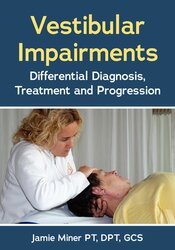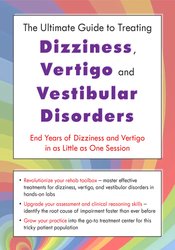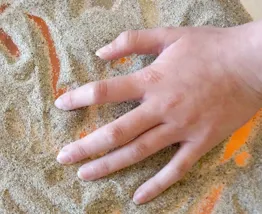Stop Telling Your Patients with Dizziness, “I Can’t Help You."

When you see the diagnosis of "dizziness" come through on your patient's referral, do you cringe or respond with enthusiasm? By the time the patient is referred to physical therapy, they have been through a battering of tests - all coming back negative. They are experiencing debilitating symptoms, and in the worst case scenarios, they are unable to work or live a fully normal life.
For patients with vestibular disorders, they may be experiencing:
- Vision problems
- Ear troubles
- Motion intolerance
- Memory disruptions
- Coordination concerns
- Emotional strains
For some patients, their dizziness may be caused by Benign Paroxysmal Positional Vertigo (BPPV). BPPV causes brief, intense spells of spinning-type dizziness that is brought on by a change in head position. You can diagnose it on the spot by tracking your patient's eye movement. You can even offer your patient immediate relief by quickly and easily treating the BPPV in the office through repositioning maneuvers.
Watch as Bridget Kulick, physical therapist, shows you what to look for when diagnosing BPPV.
Want to unlock the secrets of treating BPPV on the spot with your patients? Watch Bridget Kulick's full video on Vestibular Rehab Evaluation and Treatment.

Whether you work in hospitals, rehab centers, home health settings, or skilled nursing facilities, grow your confidence as you gain a deeper understanding of assessment, treatment techniques, patient-specific modifications, and differential diagnosis skills.

This course allows participants the ability to progress their patients through the best treatment options and provides great outcomes based on evidence and experience.

Watch Dr. Jamie Miner as she shares a proven framework for rehabilitation that combines today’s best practices with over 25 years of experience helping patients overcome vestibular disorders in hospitals, rehab centers, home health settings, SNFs, and outpatient facilities.




